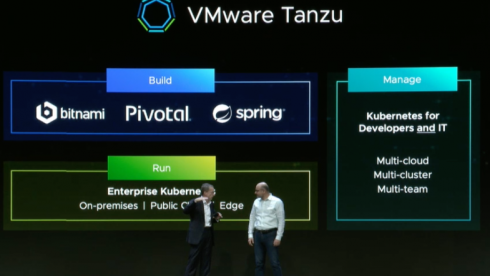DISCLAIMER: this article is older than one year and may not be up to date with recent events or newly available information.
Organizations across all sectors are now reliant on applications that can be developed and used as quickly as possible. They need that capability in order to adapt to changing marketplace requirements. This necessitates having an infrastructure that can manage this agility, that can scale and that can handle workloads. Whether they are traditional, cloud-native, Software-as-a-Service (SaaS) or other services, in multi-cloud environments. Kubernetes to the rescue.
According to Gartner, 80% of internally developed software is now either cloud-enabled or fully cloud-native. To make it work, that requires a modernized infrastructure. Fundamentally, you need three things: consistent infrastructure, consistent operations, and intrinsic security. Put another way: we need to achieve simplicity if we are to enable the extraordinary.
This means a digital foundation, an essential, ubiquitous software layer that powers the applications, services and experiences transforming the world. One that provides the platform to drive business value and create the best environment for developers. One that helps IT effectively manage existing and new applications across any cloud, to any device, with security built in. It also helps developers develop quicker, across any infrastructure, whether public cloud, private cloud or at the edge. This is critical! The days of enterprises waiting six months for an application to be developed, have to be consigned to the past.
Kubernetes: the key to modern app development
This digital foundation supports the development and operations of cloud and container-based apps, where customers are increasingly turning to Kubernetes as the tool that automates infrastructure at great scale. By connecting developers and operators, Kubernetes is cementing its place as key to the future of infrastructure and software development. Gartners supports this view. It predicts that by 2022, more than 75% of global organizations will be running containerized applications in production.
That’s a significant increase from fewer than 30% today.
That’s why we’ve introduced VMware Tanzu, a portfolio of products and services transforming the way enterprises build, run and manage software on Kubernetes. Within that is Project Pacific. This beta program supports enterprises in building Kubernetes into their software-defined foundations. And – in effect, futureproofing them for the moment when they are ready to use the technology. That could be on-premises or in a hybrid cloud. The point is: this is a real-life example of how we’re delivering consistency across platforms, using the technology enterprises are already deploying.
To oversee all this is VMware Tanzu Mission Control, a single point of management for Kubernetes clusters, regardless of where they are running. Again, this covers hybrid cloud, public clouds, managed services, packaged distributions; consistent operations, regardless of environment, that allows enterprises to build out the right platform to develop the apps they need.
Truly intrinsic security
To combat this, we need to reshape security. At the heart of this is intrinsic security, extending from workload to data center, multi-cloud to edge. This is the only way enterprises can protect their modern application deployments without hampering the innovation and agility they need. We cannot talk about facilitating new experiences, new services or even new technologies without being clear on how they will be secured – not as a bolt on, but as much a part of each application as the data it lives on or the environment it operates in.
Our acquisition of Carbon Black, boosts our intrinsic security offering, helping customers with a complete and comprehensive approach to endpoint and workload protection. On top of that, it will deploy advanced cyber security analytics to help customers stop cyberattacks and accelerate response times.
It doesn’t matter what industry you operate in. The modern app has become the definition of success. Hopefully these insights will help you to create the right environment for your organization. To create, run, manage, connect and protect these applications, and in doing so unlock the experiences your users will want to enjoy time and time again.
Category: Business, Mobility, News, SDDC
Tags: Carbon Black, Kubernetes, Project Tanzu, Security





No comments yet